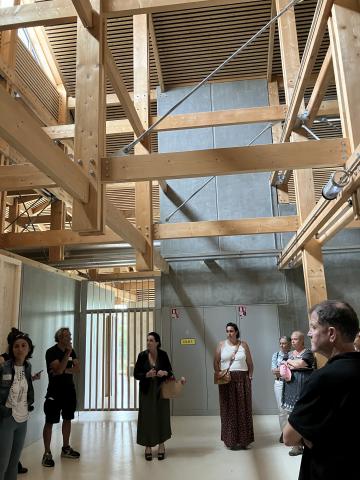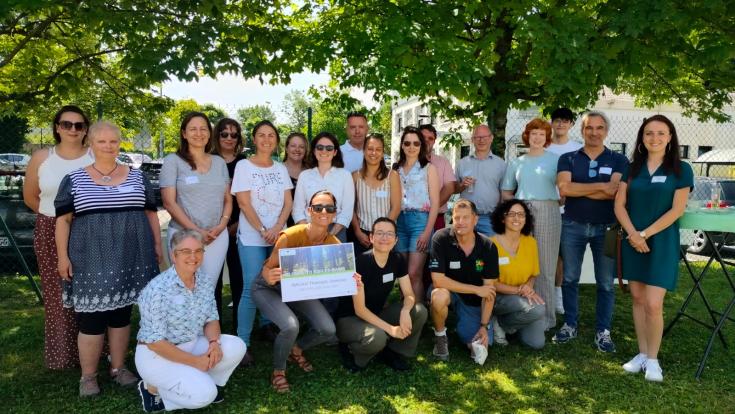Thematic Seminar France in summer 2024
Presentation of the good practices
NACAO consortium met in the town of Aix-les-Bains in eastern France during Midsummer week. The joint meeting is an integral part of the EU-Interreg project approach, where face-to-face meetings and the discussions they facilitate support the spread of new ideas from one country to another.
The first two days were dedicated to the presentation of good practices and the last day was a steering group meeting to look at the next six months. A stakeholder from each partner country presented a good practice from the region. The French brought up a project to increase the vegetation in schoolyards, which was interesting.
Since the 1950s, schoolyards in France have been paved with gravel or asphalt, with almost no vegetation. However, there is now a wake-up call to the particularly hot summers brought on by climate change, when shade and cooling are needed, as well as educational opportunities in the courtyard, for example in terms of horticulture. Children in Albertville themselves had hoped for fruit trees. The city had worked with the garden designers to implement native and easy to care for plants for two schoolyards and the project had attracted a lot of interest in the province. The experience has been inspiring: children enjoy the outdoors and the need to cool the school buildings is diminishing. In addition, the staff who carried out the yard transformation were happy and proud of the project, as they were able to contribute to innovative measures to combat climate change.
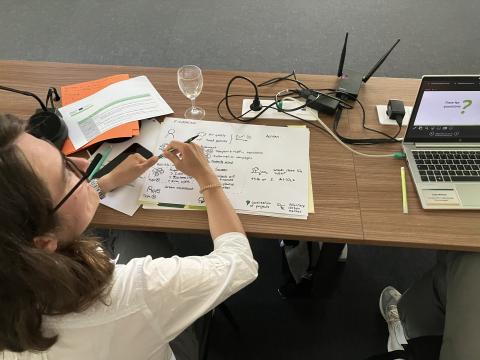
Italy presented project called “Financing urban wood and micro-urban forestation in Marche Region”, which included a study carried out on region with aims to increase local forests. The project based on an air quality study and spatial analysis of areas where the addition of forests would be particularly beneficial and feasible in terms of urban structure.
The City of Jyväskylä, Finland, presented the implementation of the city's Resource Wise Programme. Programme is elaborated and adopted by the units of the City organisation and its subsidiaries and Jyväskylä aims to be carbon neutral by 2030. This aroused the interest of the audience and questions, for example, about the budgeting of actions in the city's annual budget - the costs of resource wisdom is included to every sector's own budget.
Other projects or carbon sequestration projects presented were stormwater management and a review of the ditch network in the city of Bremen (Germany), the restoration of carbon storage in riverbanks (Spain), and forest carbon sequestration in wetlands (Poland).
Visits to a wetland restoration site and an alpine forest
Consortium meetings always include site visits, where guests can see in practice the environments in which nature-based carbon sequestration solutions are being promoted in each country. In France, we visited a restored wetland in the neighbouring town of Ruffieux. The area was the northern end of the Grand Lac, a large lake sparkling between the Alps, which had once been given over to farms for cultivation. However, dug ditches in the peaty soil caused the peat to dry out and release massive amounts of carbon dioxide into the atmosphere, and even with drainage, crops did not grow well. Another problem with ditches and drained peat soil was its lost ability to retain water. When it rained heavily, the wetland no longer compensated for flood peaks as it used to do. When the land lease agreement was terminated, the city decided that the land would no longer be leased for agricultural use. This caused disappointment and concern among the farmers, who were involved in many discussions about future changes and alternative farmland. Restoration work began in the early 2000s and by the summer of 2024 the area looked like a large grassy meadow. The soil was wet and marshy in places, as the previous months had seen exceptionally heavy rainfall. The peat layers in the area, which in some places exceed 10 m, and the carbon they stored, were secured by blocking ditches and planting native plant species. Now the wetland is functioning as it should naturally, absorbing large amounts of water and balancing soil water levels and flood peaks. In a changing climate, and with the increasing frequency of extreme weather events, the importance of wetlands will far outweigh the economic price of their restoration.
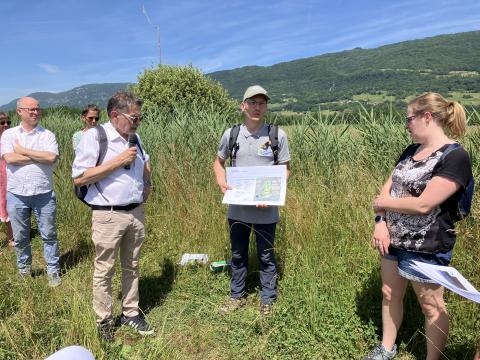
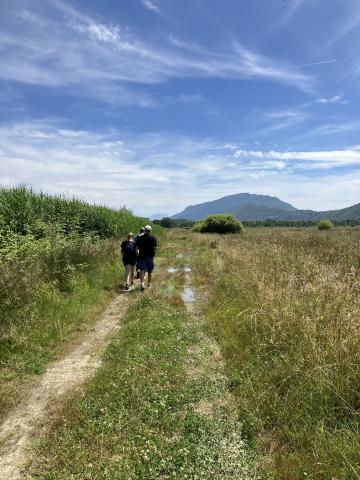
The second visit was to the coniferous forests of the Alps. In this part of France, forests are not grown for timber production, but rather for the recreational purposes and carbon sequestration. For this reason, clear-cutting is typically not carried out, but rather the removal of older trees to allow younger undergrowth to mature and increase in height and width. At the end of the tour, we also saw some local timber construction, near the new winter activity centre. The building's frame and roof support beams were all solid logs, as well as all the tables, chairs and lockers inside the building.
